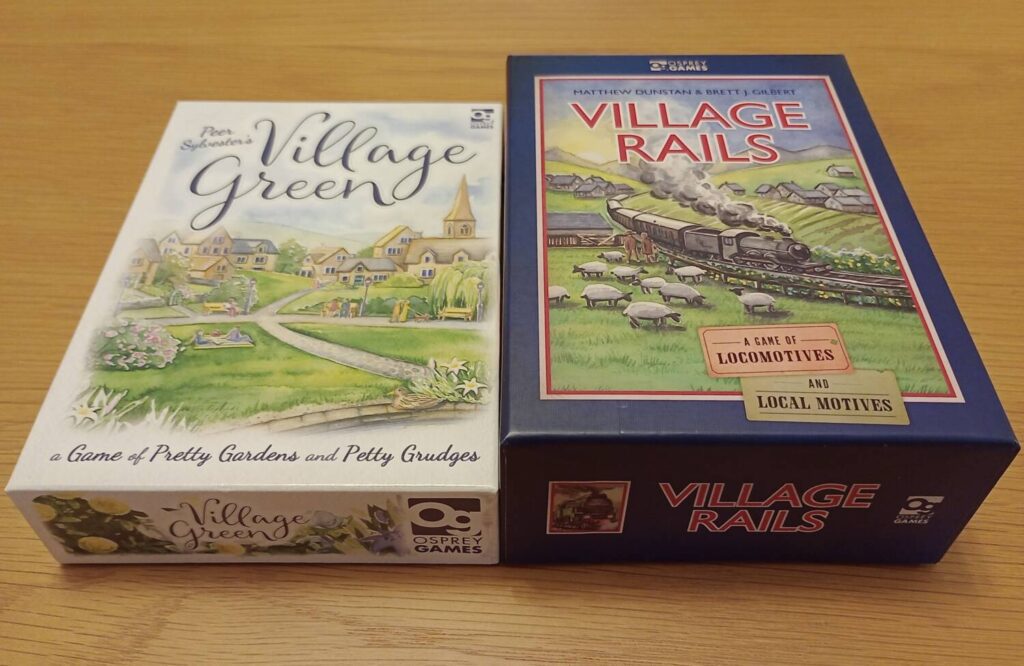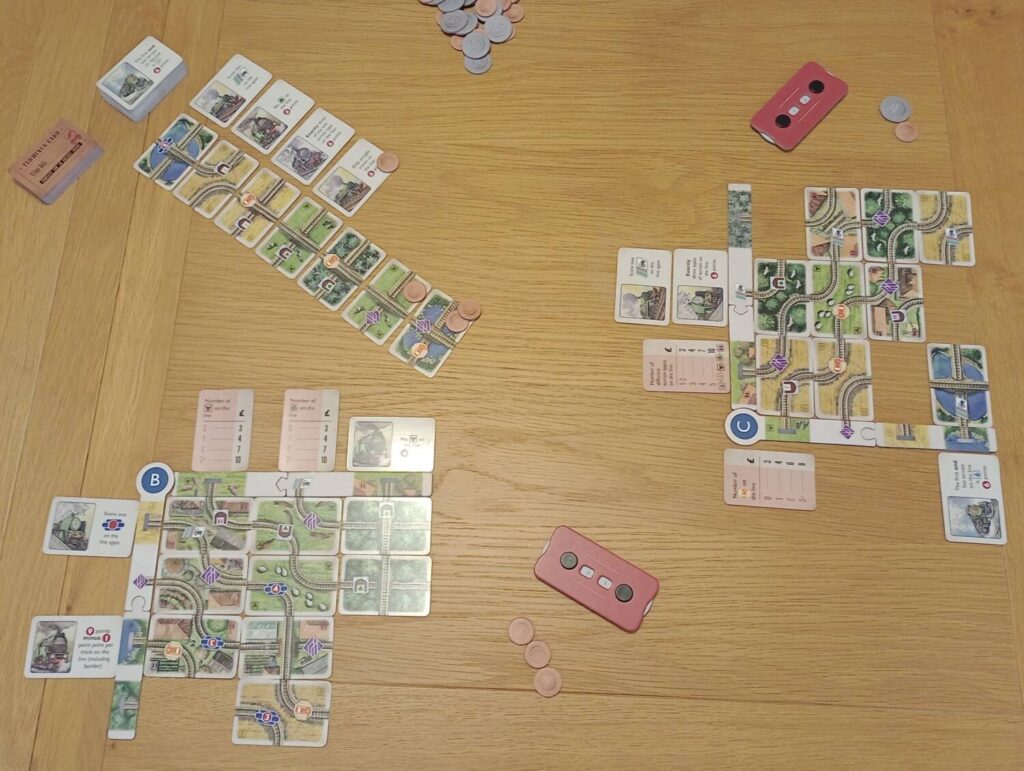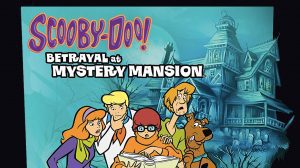Back in 2020 I swooned over Village Green, a delightfully constricting game of card placement and fluid scoring designed by Peer Sylvester and published by Osprey Games.
Fast forward to 2023 and Osprey are back with Village Rails, designed by Matthew Dunstan and Brett J. Gilbert. It’s a sequel, of sorts. Like its sibling, Village Rails provides players with the puzzley experience of creating a grid of symbol-splattered cards with scoring cards around the edge, all wrapped up in a tidy and tiny package.

It’s good: compelling, compact and cranium-caressing. Worthy of the ‘Village’ name. And yet the experience it provides is markedly different and whilst I like it quite a bit, there is no swoon.
All aboard
The goal of Village Rails is points, tracked on gorgeous scoring dials shaped like old-fashioned train tickets. They’re a delightful highlight of an excellent production.

On each of your turns you take a ‘tracks’ card and add it to your expanding 3 x 4 grid. These cards have two train tracks traversing them, with a track entering or leaving each of the card’s sides. By the end of the game you have seven tracks entering the top and left edges of your grid and squiggling their ways to the bottom and right edges. The track cards have different landscape types and some individual tracks may also have scoring symbols. On your turn you can also buy a ‘trip’ card and place it next to the start of one of the seven tracks, locking in an additional way in which that track scores.
Once a track completes its journey across your grid it’s scored based on its symbols, then scored based on any ‘trip’ cards assigned to it, and then it pays out money based on how it meets the requirements of a ‘terminus’ card you select from your hand. Scoring and payouts are largely structured around the usual board game stuff – collecting different/matching things on your track cards. It works, but it’s too safe and the most yawn-inducing part of the whole design.

After twelve turns your grid is complete, all seven of your tracks have noodled their way to their destinations and a winner is announced.
Rattling Along
Village Rail is best in the second half of the game, once your efforts start paying off and you have a sense of what you’re trying to achieve. The start can feel slow and too open – you’ve got those terminus cards to provide a slight steer but there isn’t a lot to say why one card might be better than another, leaving the first turns almost aimless.
Your sense of purpose builds as the game gets its full head of steam. Turns become progressively more interesting and satisfying, the rewards of your work turning from a trickle to a deluge. This arc, this escalation, is one of the best things about Village Rails, presenting a welcome contrast to its predecessor’s more even pace.

The winding paths your tracks take, the coming together of all those placements to create a completed grid is also wonderful. Sure, it’s going to happen anyway since you take a new card every turn, but that sense of builder’s satisfaction is very pleasant, especially when you’ve done a good job selecting cards and things work out just right.
And Village Rails looks gorgeous; Osprey Games have done a superb job. I might quibble that in poor lighting the card text, the barn symbols and two landscapes are sometimes tricky to distinguish, but it’s a handsome game. It’s hardly the most interactive of experiences, so not being able to clearly understand your opponents’ intentions from across the table isn’t all that big a loss.
Leaves on the Line
So, why despite a great production, arc and inbuilt satisfaction, have I not fallen completely for Village Rails’ charms?
Much comes down to the framing and the comparison to its elder sibling. Village Green is tight, restrictive and a perfect fit with its setting of a village green competition. The pretty petals hide sharp thorns.
In contrast, Village Rails has no bite. It’s got the same middle England, Hot Fuzz setting and a fantastic tagline (‘A game of locomotives and local motives’) but none of that comes through in the gameplay itself.

This disconnect isn’t helped by Village Rails’ generosity. Every player completes their grid. Every player gets a minimum of £3 each time they complete a track. It’s hard not to get at least some points when you complete a track. You can’t really lose at Village Rails, you just won’t do as well as another player.
And sure, this is petty picking. Objectively, there’s no real difference between getting a few points in a high-scoring game and no or negative points in a low-scoring game. But it feels different.

Now, I should say that Village Rails isn’t completely clawless, introducing its own restrictions with its use of money. Money is tight but essential for choosing the best cards at the right time and for buying those trips cards, which provide additional scoring opportunities. You get more money from the terminus cards when you complete a track, creating a lovely push-pull between wanting to make each of your twelve tracks point-perfect and wanting to complete tracks for money. It’s a compelling balancing act, one that can bog you down if you aren’t careful.
But money also highlights the game’s susceptibility to the shuffle; wealth is largely determined by the terminus cards you’re dealt, and sometimes, despite best efforts, you can’t match their requirements. There’s nothing wrong with luck in games; I’m not one of those no-luck-fanatics you see frothing over balance or the inclusion of dice (and many felt that Village Green had similar issues). But money acts as a gateway to intentional action in Village Rails, and how you get that money isn’t always fair. It’s not a huge deal (pun intended) but it’s there all the same.
This Train Terminates Here
All in all, Village Rails is very good. Its strong points far outweigh the minor nits I’ve picked above. For me it falls slightly short of its predecessor, but Village Rails is looser, kinder and larger in both scope and scale. The highs it creates are higher and it doesn’t make you feel many lows. It’s an utterly charming experience from start to crescendo and worth trying even if its elder sibling left you cold.
Me though? I miss the ability to pivot and the sharp wit of Village Green. I miss the invitation to fail.











Add Comment